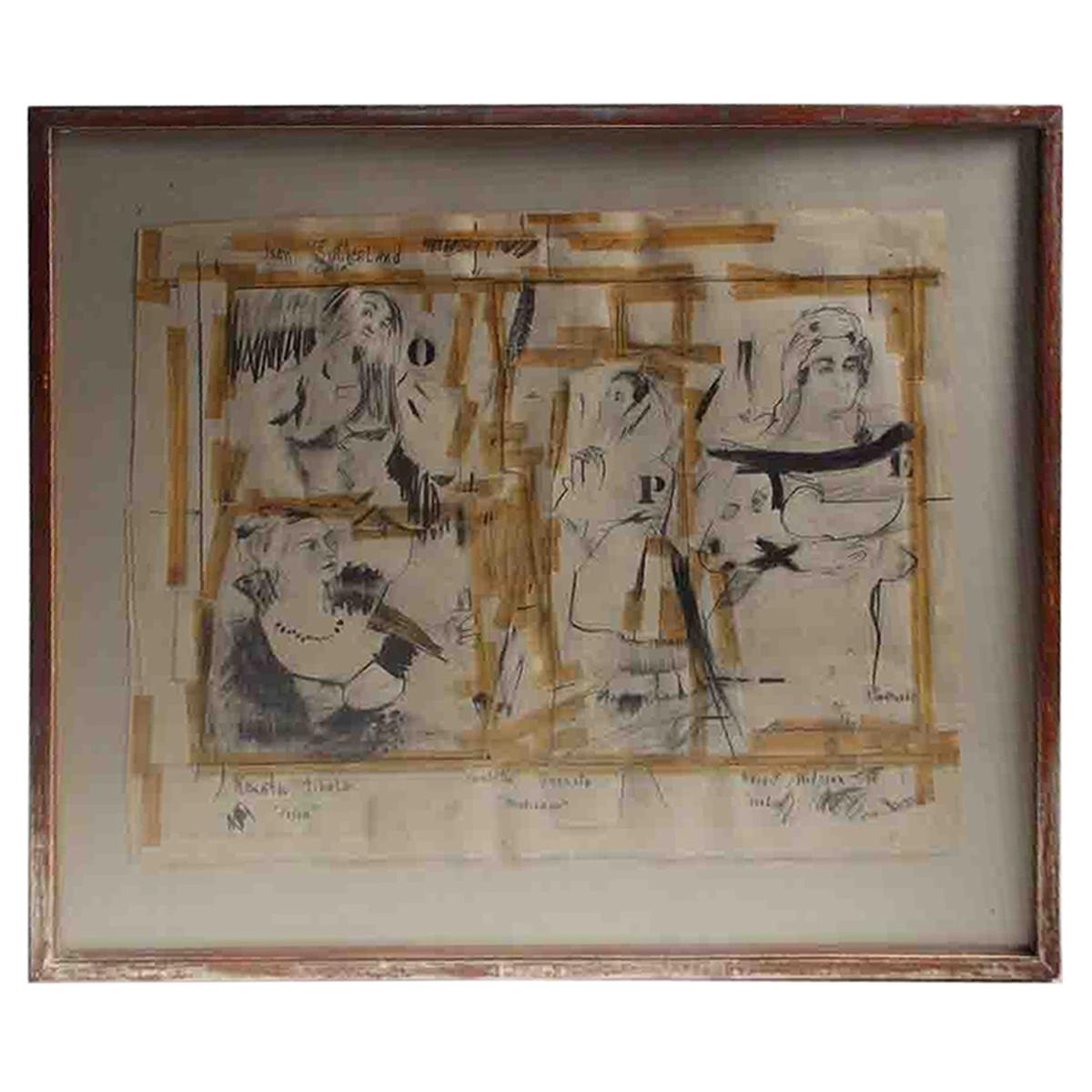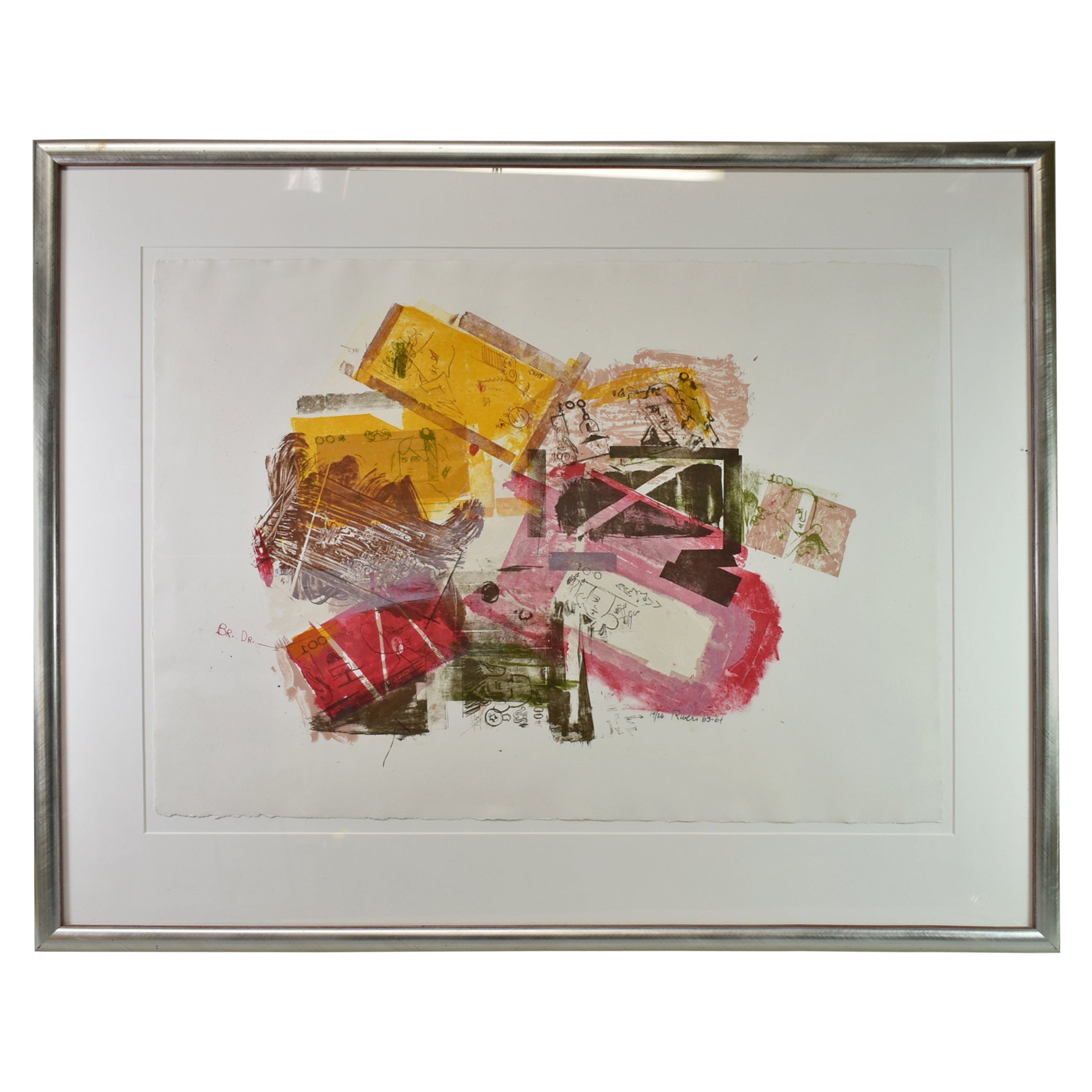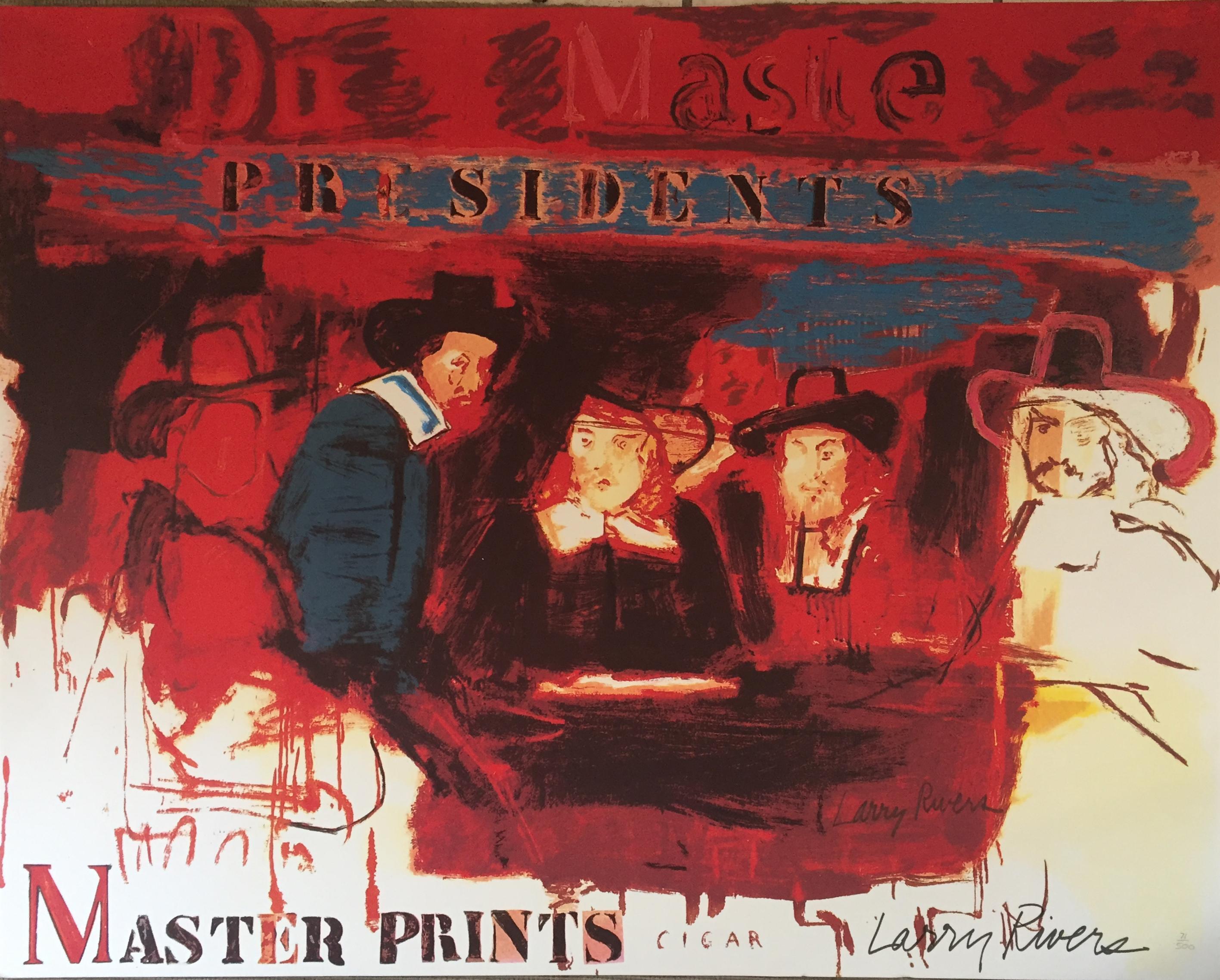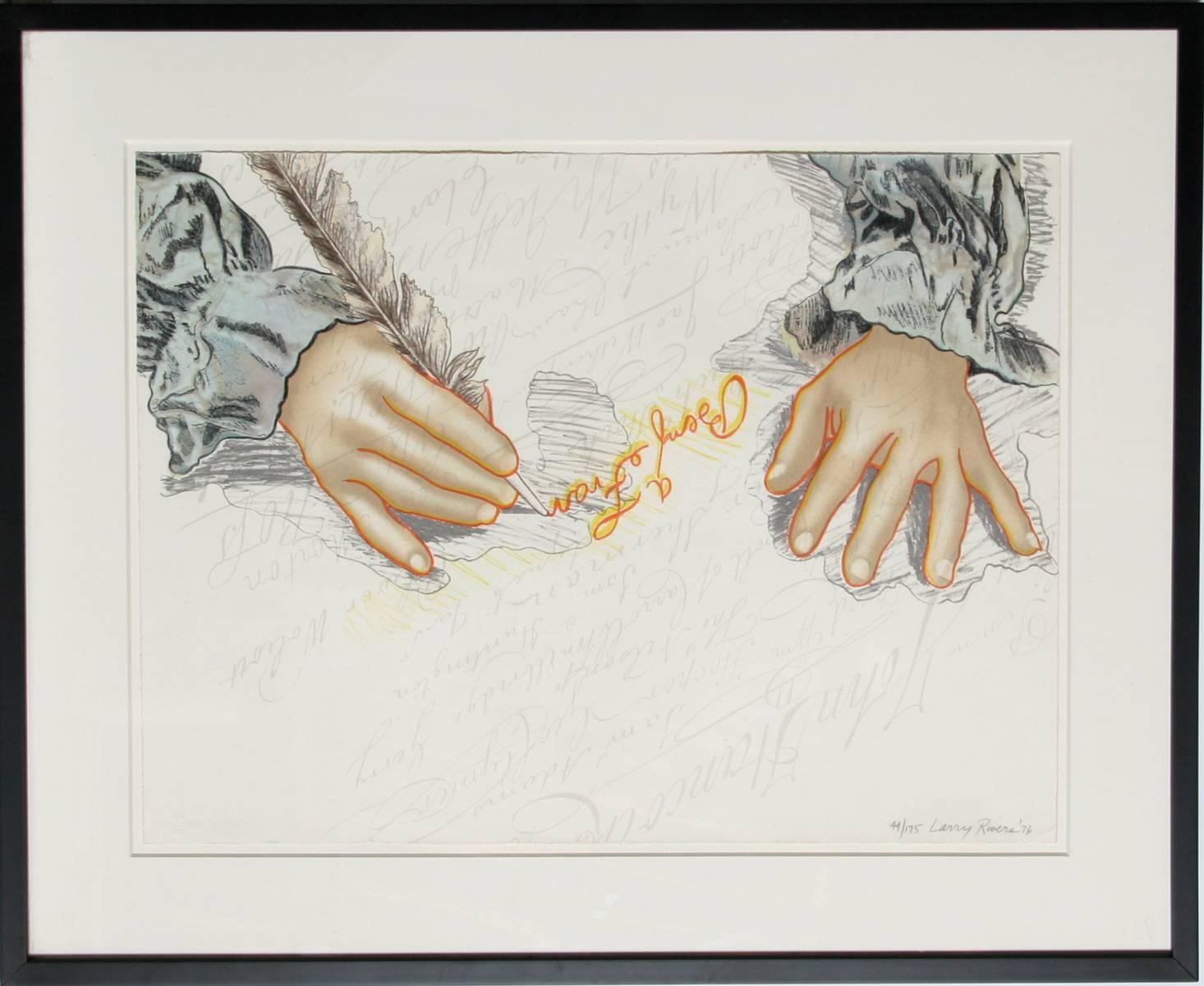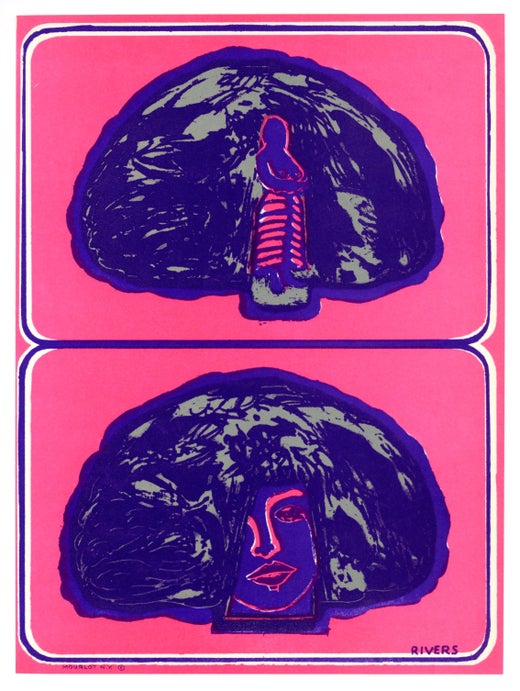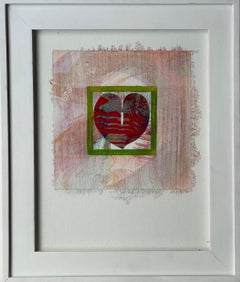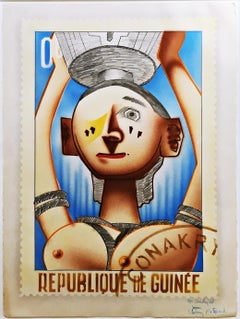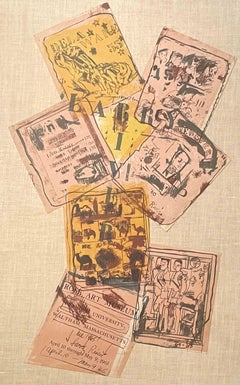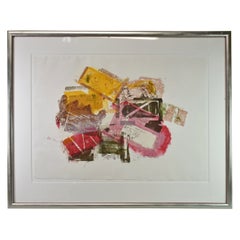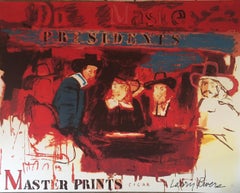Larry RiversFrench Money, unique signed drawing with collage Pop artist Larry Rivers, Framedca. 1966
ca. 1966
About the Item
- Creator:Larry Rivers (1923 - 2002, American)
- Creation Year:ca. 1966
- Dimensions:Height: 13.75 in (34.93 cm)Width: 19.75 in (50.17 cm)Depth: 1 in (2.54 cm)
- Medium:
- Movement & Style:
- Period:
- Condition:Very good condition in vintage frame.
- Gallery Location:New York, NY
- Reference Number:1stDibs: LU1745216558592
Larry Rivers
Figurative artist Larry Rivers was born in the Bronx in 1923 to Ukrainian Jewish parents, and was named Yitzak Loiza Grossberg. Rivers belonged to the second generation of the New York School of painters, although unlike most of his contemporaries he stayed away from abstraction instead preferring narrative paintings. He began his artistic career playing the jazz saxophone, and when one night his group was introduced as "Larry Rivers and the Mudcats," he decided to keep the name.
After a brief period in the army during World War II, Rivers attended Juilliard School of Music for one year before returning to the jazz saxophone. After he met the painter Jane Freilicher, he decided to devote himself to painting. Rivers attended Hans Hofmann's school for nearly two years. In 1949, he had his first solo show at the Jane Street Gallery, an artist's co-op in the Village. Rivers received favorable reviews and was invited to join the Tibor de Nagy Gallery uptown.
Rivers continued to show annually at the Tibor de Nagy Gallery from 1952 to 1962. In 1963, he joined the Marlborough Gallery, where he stayed until his death. In 1955, The New York Museum of Modern Art acquired his painting Washington Crossing the Delaware, and in 1956 the Whitney Museum purchased Double Portrait of Berdie, two of his more famous paintings. He had periodic museum shows in Europe and the United States throughout his career.
Rivers had two sons, Joseph and Steven, by his first wife, Augusta. In 1961 he married Clarice Price and had two more children, Gwynne and Emma. In the 1970s he had another son with the painter Daria Deshuk.
The subjects of River's figurative paintings were family, history, politics, religion and sex. His work done in oils often included the use of stencils, cutouts, blank canvas and image reversals. He often painted family members including his mother in law, his sons and his ex-wife. Rivers favored historical subjects such as History of Matzah: The Story of the Jews (1984-85), History of the Russian Revolution (1965) and often painted parodies including his Washington Crossing the Delaware. He enjoyed controversial subjects and shocking the public. Lapman Loves It (1966) is a nine-foot electrified assemblage complete with strategically located light bulbs. French Vocabulary Lesson (1961-62) is a nude with body parts labeled in French.
Rivers was also a writer. In 1979 he published Drawings and Digressions with Carol Brightman. In 1992 he published What Did I Do? The Unauthorized Autobiography with Arnold Weinstein.
Find original Larry Rivers prints and paintings on 1stDibs.
(Biography provided by Lincoln Glenn)
- ShippingRetrieving quote...Shipping from: New York, NY
- Return Policy
More From This Seller
View All1960s Abstract Abstract Drawings and Watercolors
Pastel, Mixed Media, Graphite
1970s Pop Art Portrait Prints
Lithograph, Screen
Early 2000s Pop Art Abstract Drawings and Watercolors
Mixed Media, Acrylic, Watercolor, Pencil
1970s Pop Art Figurative Prints
Mixed Media, Acrylic, Pencil, Stencil
1990s Color-Field Abstract Drawings and Watercolors
Crayon, Mixed Media, Oil, Watercolor, Graphite, Monoprint
1990s Abstract Mixed Media
Mixed Media, Laid Paper, Acrylic
You May Also Like
Vintage 1960s American Contemporary Art
Paper
1960s Pop Art Mixed Media
Lithograph
Mid-20th Century Prints
Paper
1990s Pop Art Figurative Prints
Archival Pigment
1970s Pop Art Figurative Prints
Lithograph
1970s Pop Art Portrait Prints
Screen, Lithograph
